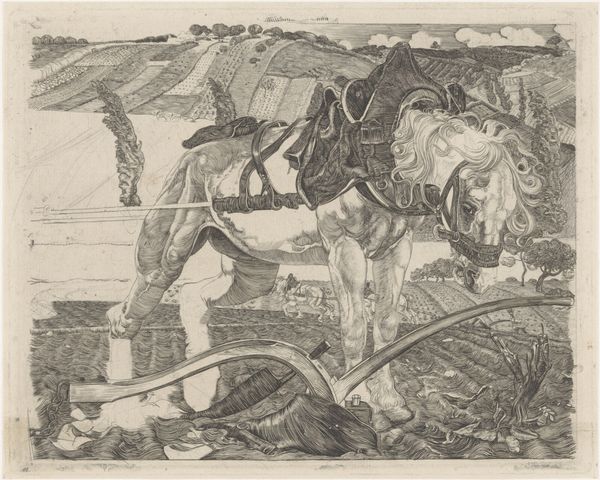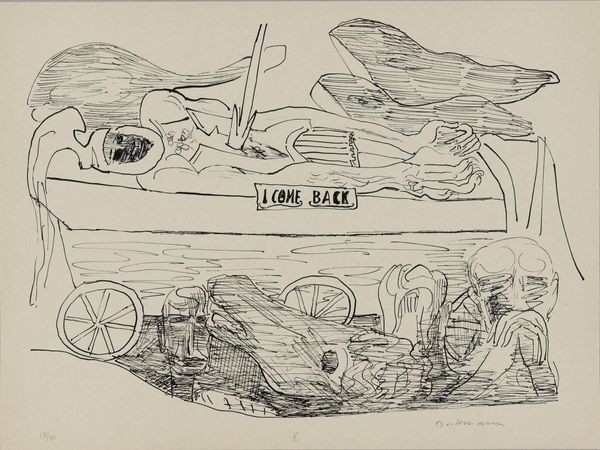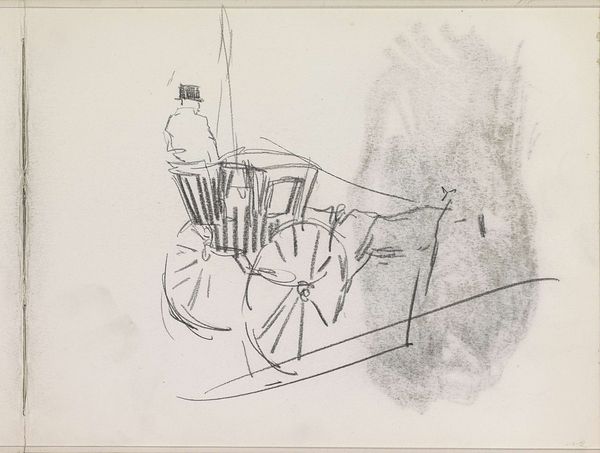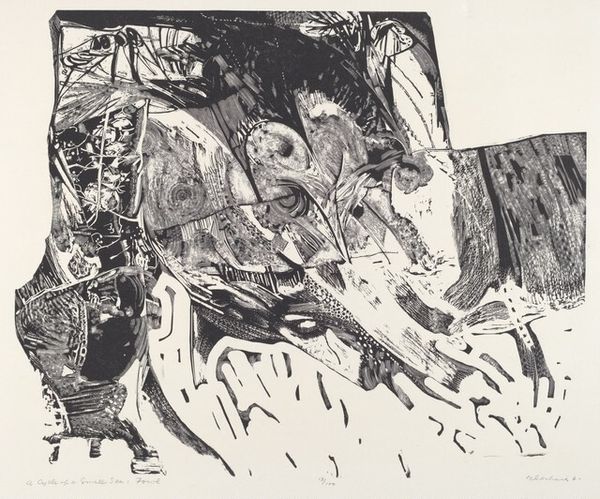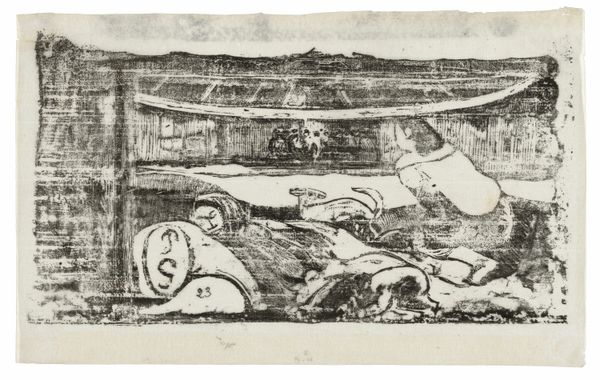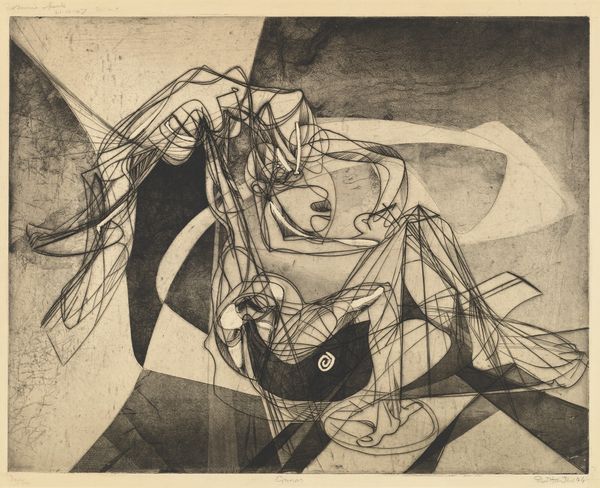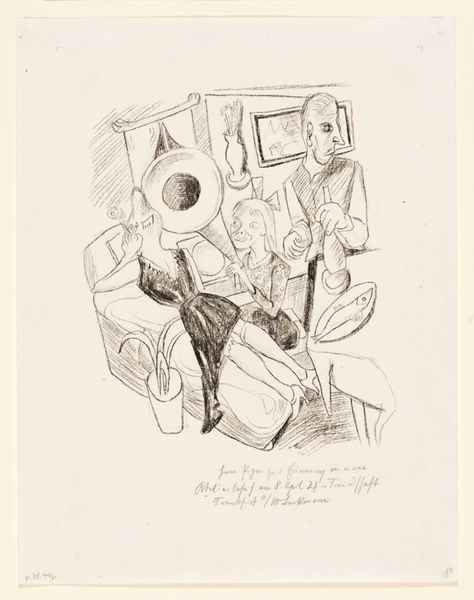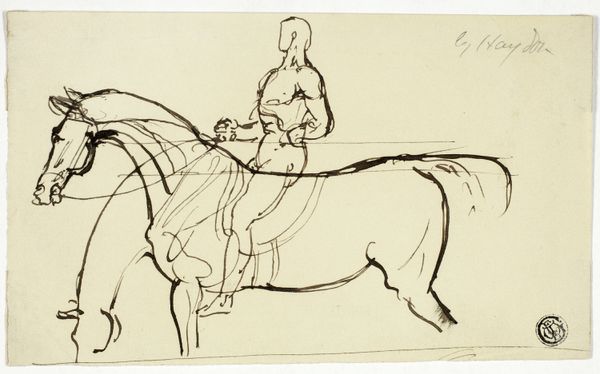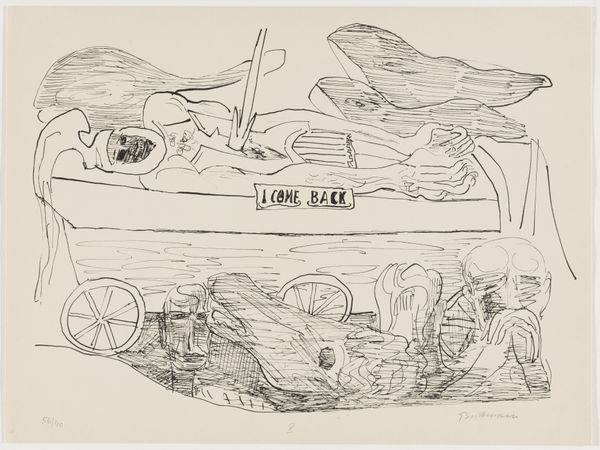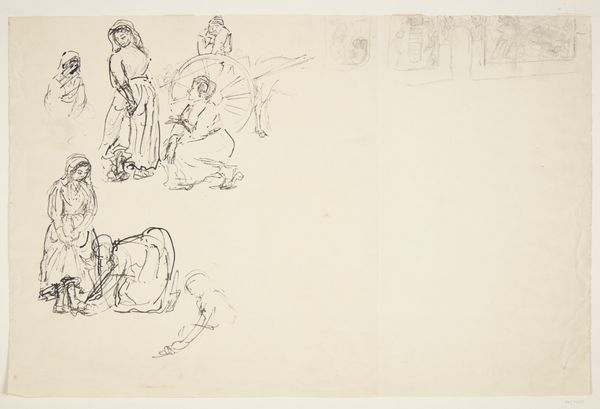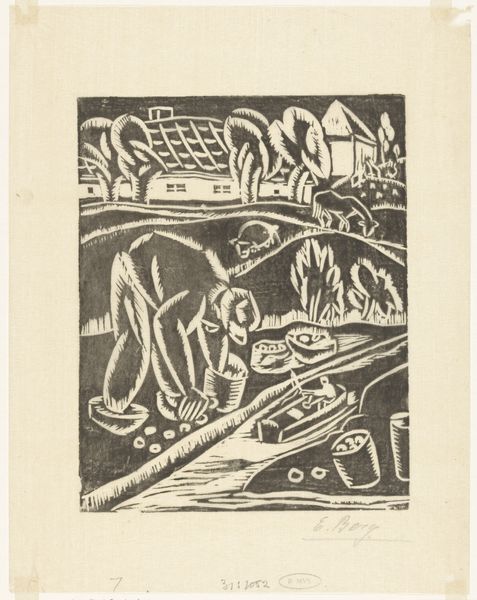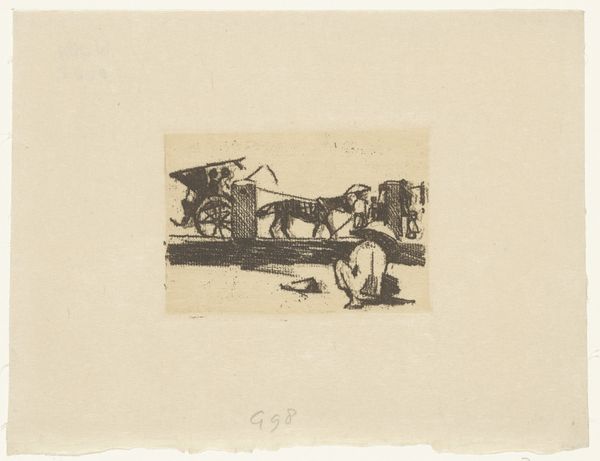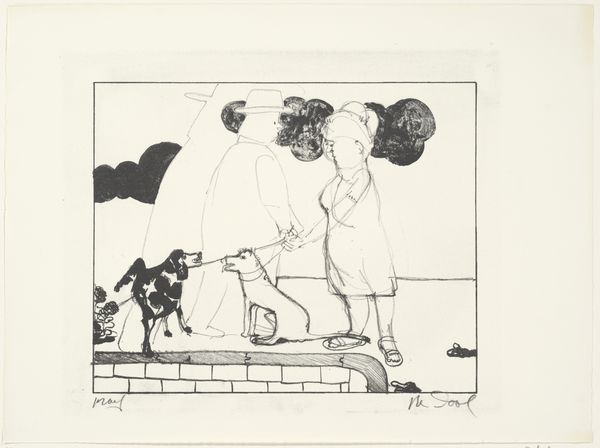
drawing, ink, pen
#
portrait
#
drawing
#
cubism
#
ink drawing
#
pen drawing
#
landscape
#
figuration
#
ink
#
pen
#
cityscape
Copyright: Public Domain
Editor: This is "Bunch of Grapes," an ink and pen drawing by Max Beckmann from 1944. It's a busy composition—almost chaotic! What’s your interpretation of this work? Curator: Considering it was created in 1944, during a time of immense upheaval in Europe, I see it as Beckmann grappling with displacement and perhaps a distorted view of traditional symbols. Do you notice the strange pyramid topped with grapes and a cart carrying figures and bizarre instruments? It is set against the backdrop of a distorted city, evoking anxiety. Editor: Yes, the grapes feel almost like cannonballs on that pyramid! It all feels very unsettling. So, you are suggesting the grapes might represent something more sinister than abundance? Curator: Precisely! Beckmann fled Nazi Germany and, even in exile, his work was charged with social commentary. The public role of art became particularly crucial for artists like him. What kind of socio-political statements do you believe Beckmann may be trying to make through his depiction? Editor: Maybe a commentary on wealth and power being built on shaky, unsustainable foundations, ready to collapse? Curator: A potent interpretation. And think about where this piece sits in a museum. Does its acquisition and display here influence how we see its message today? Editor: Definitely! By placing it in the Städel Museum, it is given a stamp of cultural importance, making his individual anxieties a reflection of universal issues. I had never considered grapes might be ominous! Curator: Exactly, seeing the grapes, cart, and overall setting through this lens reveals how deeply art reflects the historical and cultural landscape, constantly engaging in the politics of imagery.
Comments
stadelmuseum almost 2 years ago
⋮
When Beckmann created this pen-and-ink drawing of a 'Bunch of Grapes' in the spring of 1944, he had already been living in exile in Amsterdam for almost seven years. The dreamlike scene shows a tired old coachman, with a young woman at his side, transporting a huge bunch of grapes by horse and cart. Contrasting with this fantasy is an advertising column with poster images illustrating social life at the time.The highlighted, almost shining grapes can be seen as a metaphor for the sixty-year-old artist's own existential issues. Although he was living in an unsafe location and tormented by convalescence, sleeplessness and the fear of an impending call-up for military service, Beckmann was nonetheless unwilling to leave Europe at that time. His 'Bunch of Grapes' recalls the Old Testament verses describing how spies went out into the Promised Land, where milk and honey flowed, and returned with an enormous cluster of grapes as proof of the region's fertility (Numbers 13). Another, earlier work by Beckmann in which crossing a bridge describes a seemingly contrary interpretation of people starting out for the day is his etching 'The Morning'. In the radiant light of the rising sun, three generations on an empty waggon have set off for a day's work over what in those days was the Wilhelmsbrücke in Frankfurt. In this later drawing, by contrast, the distance already travelled seems vague and it is uncertain where the journey will lead.Like the watercolour 'Early Man - Primeval Landscape', the 'Bunch of Grapes' once belonged to the Munich-born art historian Jane Sabersky (1911-1983). She emigrated to the US in 1939, where she initially worked as an assistant to the art dealer Curt Valentin and at the Museum of Modern Art in New York. Immediately after Beckmann's arrival in the US she accompanied him to his first photo session in front of his triptych 'Departure'[1] and soon joined the German-speaking circle of close friends around Curt Valentin and Hanns Swarzenski. After Beckmann and his wife moved from Saint Louis to New York in 1949, they chatted "rather more about art", danced "also with Jane", celebrated New Year together and ate excellent "red cabbage and roast pork", and also translated "the speech to friends and the Faculty of Philosophy at Washington University in Saint Louis", which Beckmann gave when he accepted an honorary doctorate there in 1950.[2][1] Tagebücher, 12.9.1947.[2] Tagebücher, 31.8.1949, 25.12.1949, 31.12.1949, 20.3.1950, 14.5.1950; Ansprache 1950, pp. 75-76.
Join the conversation
Join millions of artists and users on Artera today and experience the ultimate creative platform.

